
The Baths
I. Structure
Both the Great and Small Baths were located in the central part of the Villa, just northwest of the Canopus. A large part of their ruins remain, making it easy to imagine what the rectangular rooms with concave ceilings looked like in ancient times. We know that they resembled typical Roman baths of this time period, with distinct rooms for various bathing activities. In the fronts were open paved courtyards, the palestras, where excersises took place. Scattered throughout were a few latrines, one of a single seater in the Small Baths, and two public ones in the Great Baths. After working out in the palestra, Romans moved into the calidariums for a hot water bath. This was followed by a warm bath in the one of the tepidarium rooms, some time in the circular shaped saunas, the laconicums, and finally a cold water rinse off in the rooms known as frigidariums.

Fig 1: Typical plan of a Roman Bath
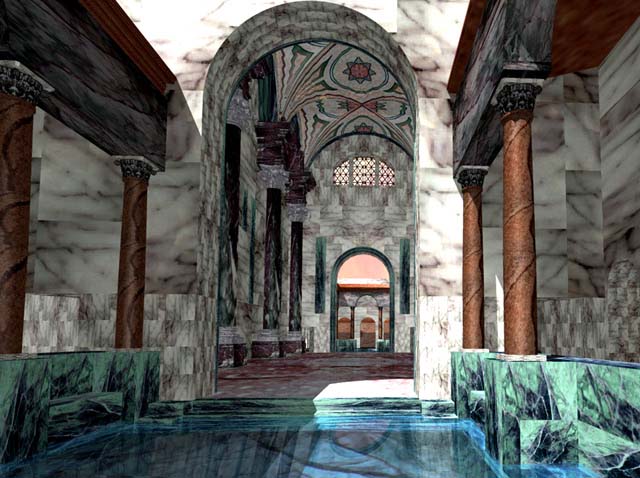
Fig. 2: Reconstruction of the Baths
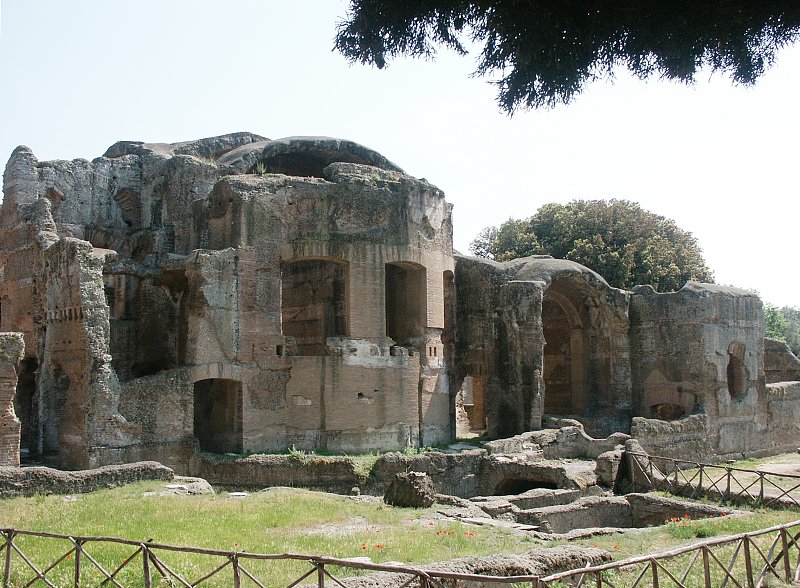
Fig. 3. Outside of the Baths at the Villa
II. Building Materials and Decoration
There are essentially three types of buildings in Hadrian's Villa: Servants Quarters, Secondary Buildings (ex. Great Baths), and Noble Buildings (ex. Small Baths). Naturally, the quality of building materials varied for each type of structure. The Great Baths were paved in opus spicatum, a simple black and white mosaic, while the Small Baths were done in the higher quality marble opus sectile. The noble Small Baths also exhibited more elaborate architecture, such as the Octagon Hall, where the perspective view through other rooms created an illusion of infinite space.
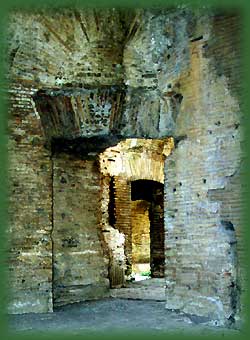
Fig. 4. The Small Baths
Though the Great and Small Baths had many differences in design, their function as bathing rooms meant that they shared features as well. For example, both used white marble revetments as a type of finish, which was especially typical of water basins in the Villa. Color fresco ceiling decorations could also be found throughout each, and the Small Baths even have some of the red and white pattern still visible today.
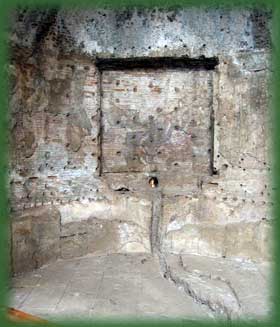
Fig. 5: Water basins in the Villa
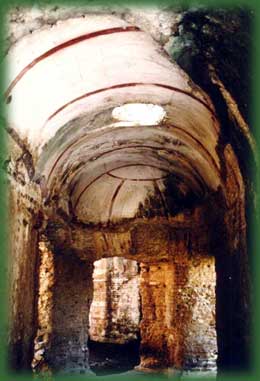
Fig. 6: Fresco Ceiling Decoration
III. Modern Interpretations
Some scholars believe that the much larger Great Baths were used for men, while women used the Small Baths. However, this theory is rapidly losing ground as we learn more about the differences in their designs, such as those previously mentioned. It now seems to be a difference in class, rather than gender, determined the occupants of each. Many now believe that the Great Baths, as a secondary structure, were mainly for higher ranking Romans, including officers and priests. The Small Baths were most likely reserved for nobility, which would explain its overall higher quality.
IV. Wider Context
Studying the structures of the Baths can tell us a lot about the hygienic attitudes of ancient Romans. Right off the bat, it's clear from the wide variety of baths that the Romans placed a great deal of importance on bathing. Everything from the varied temperature baths, to the saunas and exercise rooms, bring to mind a picture of our modern day gyms and resorts. It's clear that the Romans considered it necessary to not only purifiy the body, but to do it thoroughly and often. However, one difference that does come to mind is the public nature of the Roman baths. Though men and women were generally discouraged from bathing together, it was quite common for Romans of the same gender to share a bath. This comfortable lack of modesty was most likely the result of many factors, but one of practicality especially stands out. Without the conveniences of modern plumbing, it was simply necessary to have public facilities for bathing.